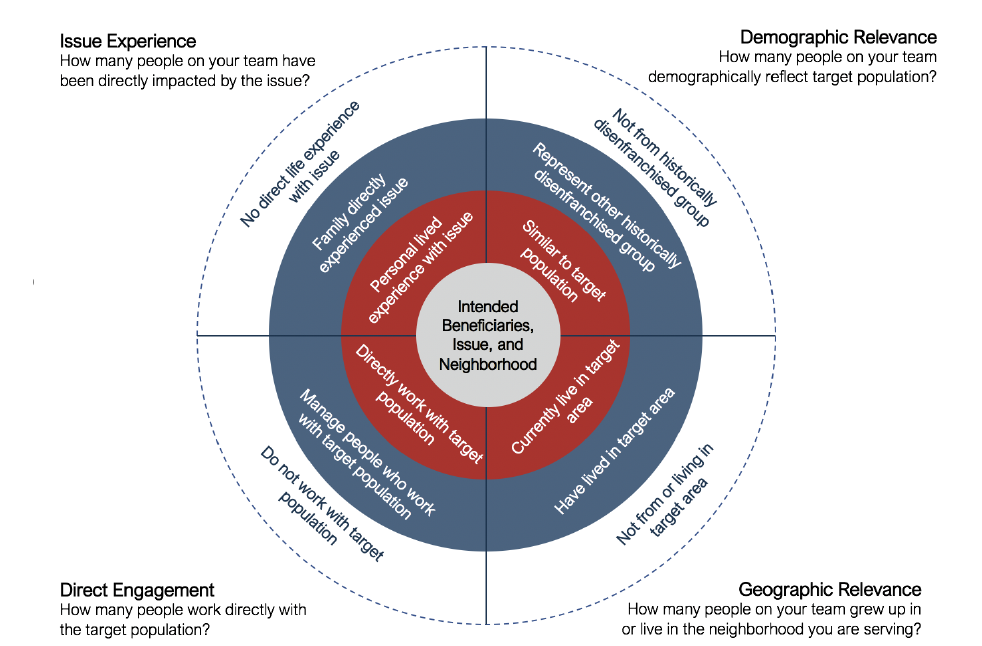Who is at Our Table?

Purpose of the Tool:
- To understand the backgrounds of current involved stakeholders as they relate to the target population or issue.
- To identify gaps in representation and discuss opportunities to engage additional stakeholders.
Suggested Use:
- Begin by ensuring the group has a common understanding of the intended beneficiaries or the issue being addressed.
- Provide each member of the current group an opportunity to identify where they fall within each of the four quadrants (Direct Engagement, Geographic Relevance, Demographic Relevance, Issue Experience).
- Discuss where the group primarily lies within each quadrant. How does this affect your work (positively or negatively)? If there is only one person in the inner circle or in any of the inner rings, are they comfortable sharing their experience working with the group (do they feel fully valued, included, and/or equipped? Tokenized? Dismissed? Negative group behaviors may be unconscious but should still be identified and addressed if possible).
- Discuss the goals of the group and where the group is in the process. Given that information, what is the ideal representation?
- Identify any gaps and discuss opportunities to bring more people into the work.
Example: The Communicating System Resources action team decides to identify client success stories and then create a marketing campaign bringing those stories to the public. This tool may be used to help determine who needs to be involved to best identify different sources for stories, how to shape the narratives, and when/who/where to share them with.
Please complete the following feedback survey regarding this tool.